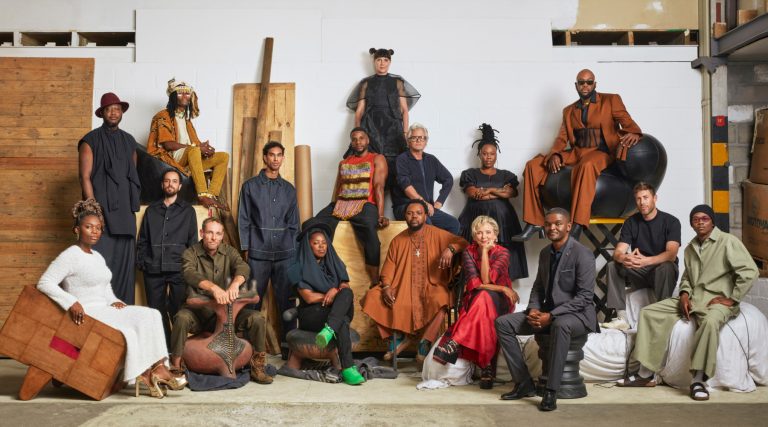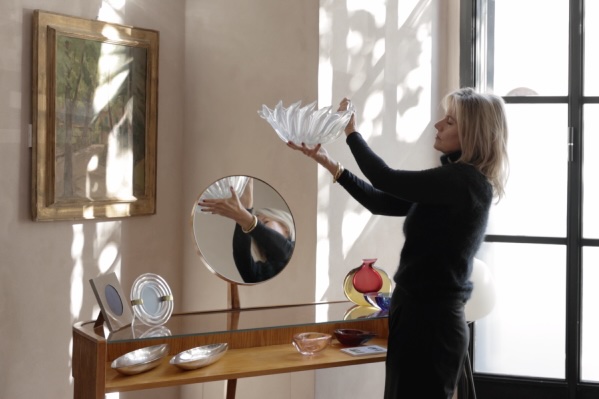May 11, 2025On a recent Sunday afternoon, the Yale Center for British Art was filled with light. Not just the filtered daylight that Louis Kahn, the building’s architect, harnessed with his legendary skylights but a lightness of spirit. After shutting down for a two-year renovation, the museum reopened this spring with a completely reconceived collection display, two major exhibitions and a renewed sense of purpose.
The relaunch is as much about physical restoration as it is about institutional reinvention. Designed by Kahn in the late 1960s and completed posthumously in 1977, the building was the architect’s final commission in the United States and stands as an icon of late-modernist architecture.

But time withers all. The skylights, 224 in all, had yellowed and cracked. “We replaced the original acrylic domes with polycarbonate ones,” says Lucinda Lax, the museum’s curator of paintings and sculpture. “They look the same to the eye but function so much better.”
Similar upgrades were made throughout the building. More than 6,800 linear feet of track lighting equipped with hot halogen bulbs has been replaced with LED fixtures, bringing the museum into compliance with 21st-century energy standards without compromising the aesthetic. New Zealand wool carpeting and fresh Belgian linen on the walls soften the sounds of chatter and footsteps.
White-oak wall panels and shutters have been refinished and repaired, not replaced. In the lobby, the welcome desk was reimagined, in the same wood, with a circular form that feels like a natural extension of Kahn’s material philosophy.

Visitors enter through a matte-steel facade that gives little away about what lies beyond. Kahn wanted the building to integrate into the street life outside, not to announce itself ostentatiously, while the alternating surfaces of the pewter-like panels and reflective glass do a dazzling little dance with New Haven’s natural light. “On a gray day, it will look like a moth,” the architect once said, “on a sunny day, like a butterfly.”
Inside, the signature cylindrical stairwell rises like a giant column, its raw-concrete construction both monumental and intimate. The white-oak paneling — meant to evoke a British library — adds warmth and a sense of history to the somewhat Brutalist design. The building’s human scale, its rhythm of solids and voids and its reverence for natural light make it feel less like a shrine and more like a space for slowed-down looking.

There’s no tape on the ground telling museumgoers to stand back from the art, no plexiglass protecting and obstructing the vivid oil paintings and not even an entry fee. All these “no’s” actually say “yes.” Together, they invite intimate interaction with the works, whether standing or seated in the curvy modular seating by Don Chadwick for Herman Miller.
But the most dramatic shift is an intellectual one. For the first time in its history, the museum’s collection is presented in a chronological sequence on a single floor. Titled “In a New Light: Five Centuries of British Art,” the fourth-floor installation comprises 374 works, including 20 paintings in the Library Court. Visitors can now walk from the 16th century to the present day in one continuous loop.

“We want to showcase the architecture and the artwork in a symbiotic way,” says Lax. “It’s not just about the art or the building but how the two speak to each other.” The new layout opens interior vistas, creating unexpected sight lines and layered views. Monumental full-length portraits meet the viewer at eye level in the Library Court, where George Stubbs’s menagerie of animal paintings fills a multistory wall.
Beyond being chronological, the hang is suggestive, thematic and subtly political. Women and international artists from across the empire are featured prominently, as are scenes of far-flung lands outside the British Isles.

A circa 1694 view of Barbados attributed to Isaac Sailmaker, likely derived from a map, sits near scenes of British naval power. A William Daniell landscape depicts a tea-processing center in 19th-century Guangdong, China, also based on secondary sources. Nearby, a serene vision of Darjeeling contrasts with a smoky London skyline seen from Greenwich Hill painted in 1870 by Henry Dawson.
An 1861 painting by Joanna Mary Wells portrays Jamaican-born domestic worker and Pre-Raphaelite model Fanny Eaton dressed as an ancient Syrian queen. Cecily Brown’s wildly brushstroked canvas The Hound with the Horses’ Hooves, 2019, carries us into our present chaotic century while referencing historical hunting scenes.
These works, many of which underwent conservation during the closure, tell a broader story about British art, and about empire.

“British art,” Lax says, “has always been international, even when it pretended otherwise. Many of these artists weren’t born in Britain or they worked abroad. We want the display to reflect that complexity.”
That complexity also animates the museum’s two headline exhibitions. On the third floor, Lax curated “J.M.W. Turner: Romance and Reality” (up through July 27), a 77-work survey drawn almost entirely from the museum’s own holdings.
The show spans Turner’s career from topographical draftsman to romantic visionary whose mid-19th-century oil paintings, and especially his turbulent seas and colorful skies, presaged Impressionism and teetered on the brink of abstraction.

“He never stopped drawing,” Lax says. “We have the Channel Sketchbook, from 1845, filled with vivid sunset studies done just before he crossed to France. Even at the end, he was observing, recording, absorbing the world.”
Downstairs on the second floor, “Tracey Emin: I Loved You Until The Morning,” the artist’s first major solo show in a North American museum, foregrounds her expressionistic acrylic paintings — an often-overlooked side of her practice. These works mainly feature nude women, some gushing blood between their legs, making it clear that Emin has taken the torch from Willem de Kooning, but in a far more personal, unflinching way.
The Emin show was curated by the museum’s new director, Martina Droth. And Lax sees resonances between the artists featured in her and Droth’s exhibitions. “They’re both obsessed with feeling,” she says. “Turner is inventing what I call atmospheric topography. Emin is channeling trauma and intimacy. Their materials are different, but the emotional investment is similar.”

From The Mountain to The Lake, 2022, by Tracey Emin. © Tracey Emin, DACS 2024
Emin frequently cites Turner as an influence, and they both lived in coastal Margate in their childhood and as mature artists. One of Emin’s canvases in the show, originally titled Turner Eat Your Heart Out and later renamed A Rose (2007), directly nods to him. Another, From The Mountain to The Lake (2022) — never before shown publicly — depicts a dreamlike Austrian Alpine landscape overpainted with ghostly figuration. (There are several Turner depictions of Apine landscapes populated by lively characters one floor up.)
The Emin exhibition includes canvases spanning nearly two decades, tracing her return to painting after years of working in installation, neon and textile. She now primarily uses acrylic because of a personal aversion to the smell of oil paint, which she associates with painful memories of having an abortion in her early years as a Young British Artist. “Her process is visceral,” says Lax. “Every canvas feels like it holds a body — a full engagement of mind and muscle.”
If Turner is compulsive in his observation, Emin is compulsive in her confessional expression. Although the artists are not overtly linked in the galleries, their pairing creates a dialogue across time and sensibility. Their shared sources of inspiration — bodies of water, Margate — and their mutual use of light as feeling fit right into the museum’s broader exploration of British identity.

That inquiry will continue in the fall with “Hew Locke: Passages,” the first U.S. survey of the Guyanese-British artist, known for his exuberant, politically charged installations. “British art is many things,” Locke has said. His show will bring that multiplicity front and center.
For now, though, the museum has struck a balance between historicity and change. “The display isn’t static,” Lax says. “It lives and breathes. We’re already thinking about what comes next.”
What’s clear is that this reopening signals an evolution in what it means to be a museum of British art in 2025. The United Kingdom’s shadow side is allowed to come out next to its public-presenting image, not in a way that’s self-effacing or apologetic but matter-of-factly.
As Kahn once said, “Light casts a shadow, and the shadow becomes light.”







